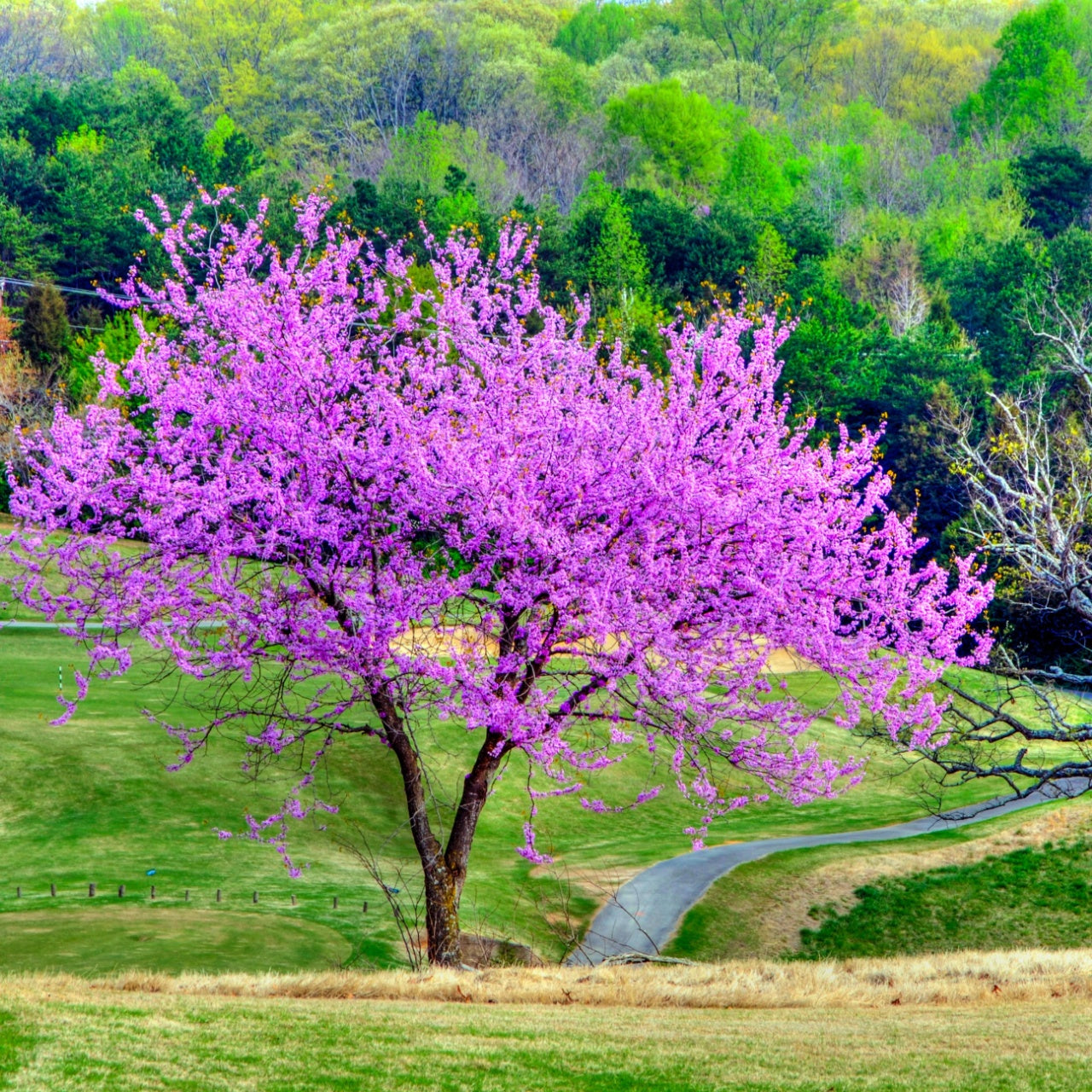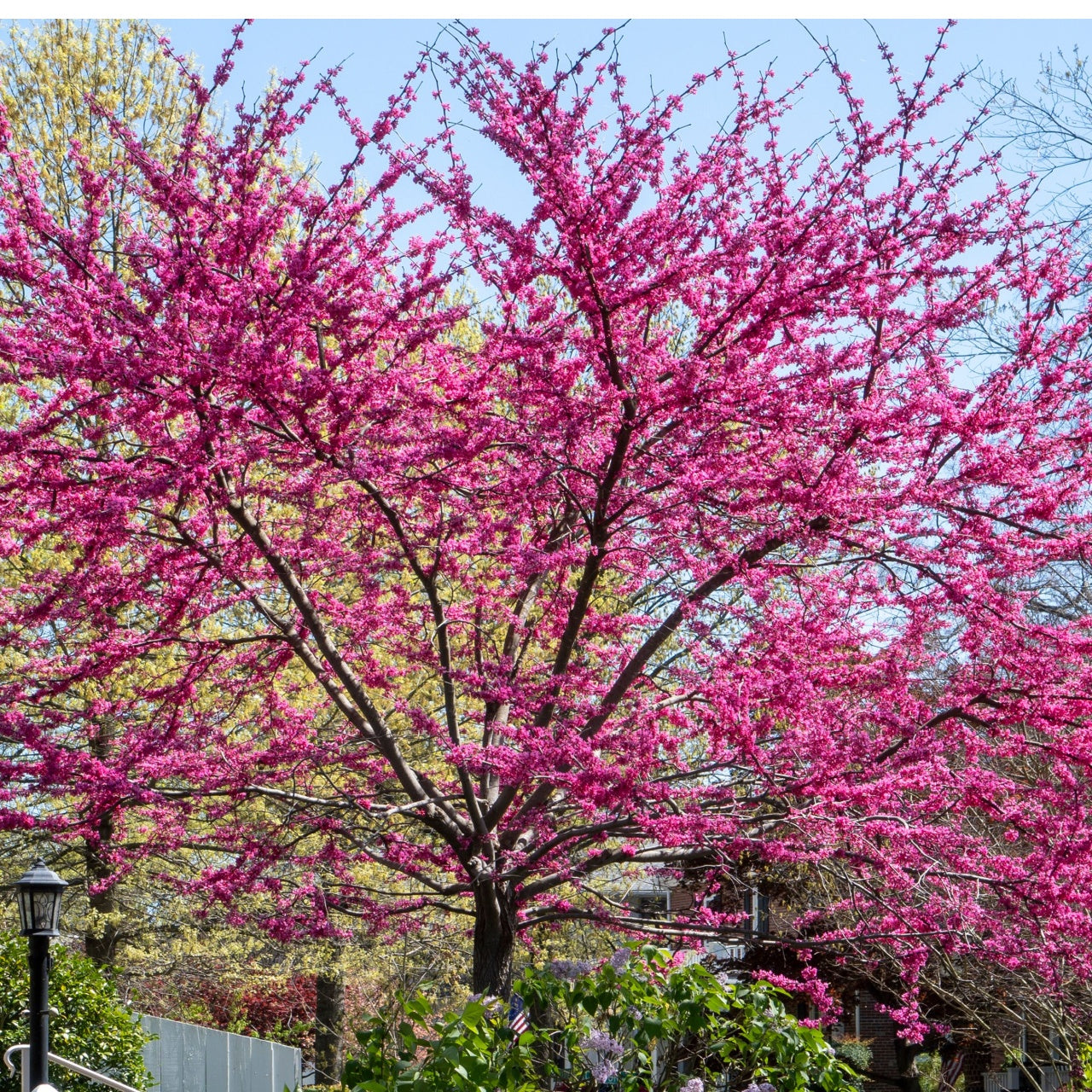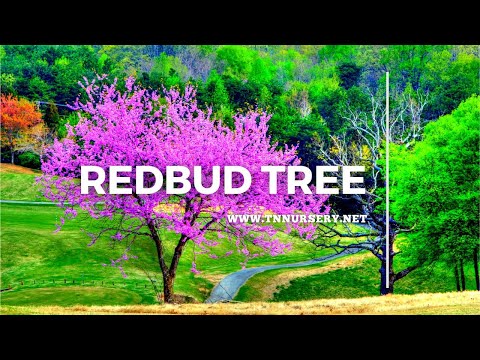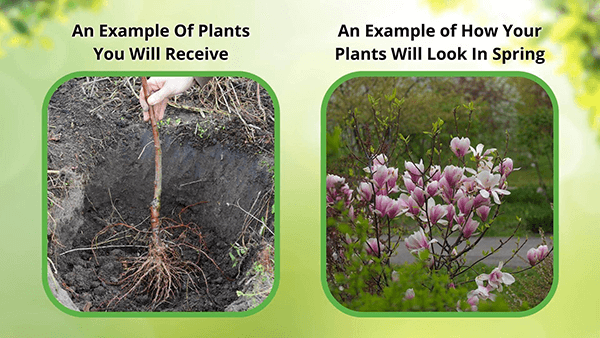Buy Redbud Tree | Cercis Canadensis
The Redbud Tree has heart-shaped leaves and beautiful pink-purple blooms in early Spring. It is a stunning deciduous tree that will become the focal point of your garden or landscape, with tiny lines of flowers dotting the branches in spring. It's a fast-growing tree that homeowners enjoy due to its ease of growth, low maintenance, and disease and pest resistance.
Landscape Uses and Maintenance - Redbud Tree (Cercis Canadensis)
The Redbud Tree is a native tree with heart-shaped leaves and tiny flowers that uniquely bloom straight from the bark. This beloved tree will be a great addition to your landscape. This low-maintenance tree does not need fertilizer or herbicides, insecticides, or even pesticides to thrive in landscaping.
Prune branches of this tree as needed, such as if you notice crossing branches that rub, to prevent fungal issues. This tree can also be pruned to keep it a shorter, more manageable height.
Deer-resistant and pollinators flock to this tree
This tree will attract many hungry pollinators, including bumblebees and solitary bees. It also attracts Swallowtail butterflies and is the host plant to Henry’s Elfin butterfly. This tree is easily propagated by its peapod-like seeds, and saplings are likely to sprout around its base.
Redbud Tree Details - Redbud Tree (Cercis Canadensis)
Family Fabaceae
Light Requirement: Full Sun
Water Needs: Moist
Height: 15 - 35 ft.
Spread: 20 - 35 ft.
Growth Rate: Fast
Bloom Time: Spring
Flower Color: Purple
Wildlife Value: Attracts bees
Noteworthy Characteristics of the Redbud Tree
Unlike many other trees that would decline, the Redbud Tree leaf can handle being planted near almost anything you plant it beside. Love this tree, but looking for another color to have in your garden? Some varieties are white, pink, or purple. Collect them all! TN Nursery grows all our trees in Tennessee, and we source seeds from many different parts of the US to provide trees and plants for everyone's zone.
Exposure
The Redbud Tree flourishes in complete sun to shade. For best growth and flowering, it favors 4 to 6 hours of total sunlight daily. In hotter climates, some afternoon shade can help prevent leaf scorch.
Height at Maturity
Over 25 Feet
Usage
Flowering
Shipped As
Bare-root
Ships
UPS
Planting Zones
4-9





